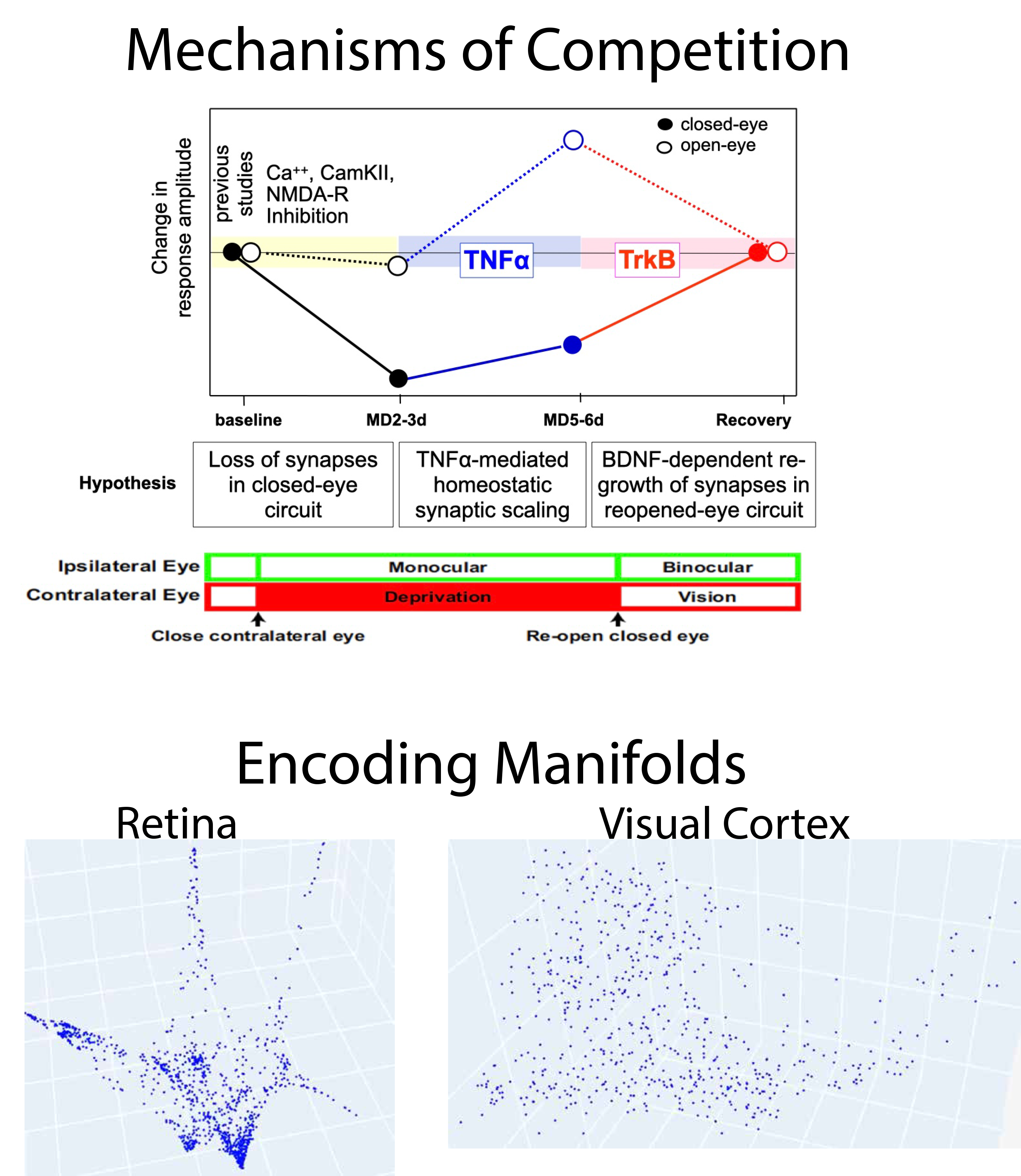Abstract:
Inputs from the two eyes appear to compete with each other for driving responses in the developing visual cortex: occluding one eye allows the other to become more powerful. Competition for a limited supply of neurotrophins was proposed as the cellular and molecular basis of this interaction. We have used genetic and chemical-genetic manipulations to delineate the mechanisms of such competition and conclude that it is the result of the interaction of distinct mechanisms that are not inherently competitive.
We have also devised a novel approach to revealing the neural code at different levels of the mouse visual system. Neural encoding manifolds that we create can also be used to probe machine learning networks like those used to recognize pictures in Facebook. We find that these artificial “neural” networks are more similar to big retinas than to small brains.

Biography:
Michael Stryker studied at Deep Springs College and the University of Michigan, where he earned the B.A. in philosophy with a minor in mathematics and worked in the laboratory of James Olds. He earned the Ph.D. in Peter Schiller's laboratory at M.I.T. in 1975, followed by postdoctoral research with David Hubel and Torsten Wiesel at the Harvard Medical School. He joined the Physiology Department and nascent neuroscience program at UCSF as an assistant professor in 1978, holds the W.F. Ganong Chair of Physiology at UCSF, and serves on the Board of Directors of the Allen Institute He has been honored by the W. Alden Spencer Prize from Columbia, the Ralph W. Gerard Prize from the Society for Neuroscience, and by election to the American Academy of Arts and Sciences and the U.S. National Academy of Sciences.
His laboratory’s research focuses the role of neural activity in the development and plasticity of precise connections within the central nervous system. Most of his work has been on the visual system, in recent years on the visual cortex of the mouse. Current experiments seek to understand the cellular and neural circuit mechanisms of activity-dependent cortical plasticity, the interactions between neural activity and molecular cues in the formation of cortical maps, the difference between the limited plasticity in the adult brain and the much greater plasticity during critical periods in early life, and novel mathematical means for understanding cortical coding. His experiments take advantage of transgenic mice and optical as well as electrical approaches for recording from and labeling and perturbing connections of specific cells.
